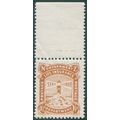Portinscale, Cumbria nr Keswick - Derwentwater Hotel -Plastichrome postcard 60s
- Condition : Used
- Dispatch : 2 Days
- Brand : None
- ID# : 181882347
- Quantity : 1 item
- Views : 150
- Location : United Kingdom

- Seller : justthebook (+1703)
- Barcode : None
- Start : Sun 02 Jun 2019 16:07:47 (BST)
- Close : Run Until Sold
- Remain : Run Until Sold
More Listings from This Seller view all
Seller's Description
- Postcard
- Picture / Image: Derwentwater Hotel, Portinscale, Keswick, [Cumbria]
- Publisher: Plastichrome (Colourpicture) / Sanderson & Dixon (Ambleside)
- Postally used: no
- Stamp: n/a
- Postmark(s): n/a
- Sent to: n/a
- Notes / condition:
- Postcard
Please ask if you need any other information and I will do the best I can to answer.
Image may be low res for illustrative purposes - if you need a higher definition image then please contact me and I may be able to send one. No cards have been trimmed (unless stated).
------------------------------------------------
Postage & Packing:
Postage and packing charge should be showing for your location (contact if not sure).
No additional charges for more than one postcard. You can buy as many postcards from me as you like and you will just pay the fee above once. Please wait for combined invoice. (If buying postcards with other things such as books, please contact or wait for invoice before paying).
Payment Methods:
UK - PayPal, Cheque (from UK bank) or postal order
Outside UK: PayPal ONLY (unless otherwise stated) please. NO non-UK currency checks or money orders (sorry).
NOTE: All postcards are sent in brand new stiffened envelopes which I have bought for the task. These are specially made to protect postcards and you may be able to re-use them. In addition there are other costs to sending so the above charge is not just for the stamp!
I will give a full refund if you are not fully satisfied with the postcard.
----------------------------------------------
Text from the free encyclopedia WIKIPEDIA may appear below to give a little background information (internal links may not work) :
*************
Portinscale is a village in Cumbria, England. It is situated close to the western shore of Derwentwater and within the Lake District National Park. It is some 1.5 miles (2.4 km) by road from Keswick. For administrative purposes, Portinscale lies within the civil parish of Above Derwent, the district of Allerdale, and the county of Cumbria. It is within the Workington constituency of the United Kingdom Parliament, and the North West England constituency of the European Parliament.[1] The village covers approximately 0.15 square miles (0.39 km2). At the 2011 census the population totalled 560.[2]
The name of the village means "the harlot's hut", deriving from the Old English "portcwene" (harlot) and Old Norse "skáli" (hut).[3][n 1] The scholar Eilert Ekwall cites an undated early spelling of the name as "Portquenscale".[5]
The antiquary W G Collingwood, commenting on an archaeological find at Portinscale, wrote that it showed that "Stone Age man was fairly at home in the Lake District".[6] The remains of the workshop of a prehistoric tool-maker were discovered in 1901 by workmen digging out a fish-pond near the village, about 150 yards (140 m) from the north-west shore of Derwentwater.[7] A later find was a mould dating from about 1400, used to make crucifixes for the use of religious pilgrims. Hardwicke Rawnsley, co-founder of the National Trust and vicar of Portinscale's parish church, Crosthwaite, theorised that the mouldings were sold to people en route to St Herbert's Island from Nichol End, Portinscale's embarkation point on Derwentwater.[8] From medieval times until the 20th century, according to records at Carlisle Castle, a Court Leet met periodically and appointed constables for Portinscale.[9] In the 17th century the village was a centre of Quakerism, and for preaching without a licence several local Quakers suffered the prescribed penalty, "ye Spoiling of their goods and imprisonment of their bodys."[10]
The main road from Keswick to Cockermouth ran through Portinscale until the 1960s until the Bypass was built. In 1911 there was controversy about the county council's proposal to demolish the medieval bridge carrying the road across the River Derwent and replace it with a modern structure. There had been a stone bridge on the site since c. 1210–16, although the date of the structure under threat in 1911 is unknown.[11] The bridge, properly called "the Long Bridge", was unusual in having two arches; on the great coach road from Kendal to Cockermouth all but two of the other bridges crossed their rivers in a single span.[11][n 2]
Rawnsley and Sir Robert Hunter of the National Trust led the opposition to the council's proposal. They were supported by The Times, The Manchester Guardian and the Royal Automobile Club,[12] and the proposal was dropped. The old bridge survived for another 43 years, until it was damaged beyond repair by floods in December 1954.[13] A temporary metal girder Callender-Hamilton bridge was placed across the river,[14] to carry alternating one-way traffic, and a new permanent bridge was built 400 yards (370 m) downstream, allowing the diversion of the main road to by-pass the village. After the new road bridge was opened, the temporary metal structure was replaced by a new pedestrian bridge on the old site, allowing foot traffic between Portinscale and Keswick on the path across the fields known as the Howrahs.[11][n 3]
Listing Information
| Listing Type | Gallery Listing |
| Listing ID# | 181882347 |
| Start Time | Sun 02 Jun 2019 16:07:47 (BST) |
| Close Time | Run Until Sold |
| Starting Bid | Fixed Price (no bidding) |
| Item Condition | Used |
| Bids | 0 |
| Views | 150 |
| Dispatch Time | 2 Days |
| Quantity | 1 |
| Location | United Kingdom |
| Auto Extend | No |



 for 1 item(s)
for 1 item(s)
















